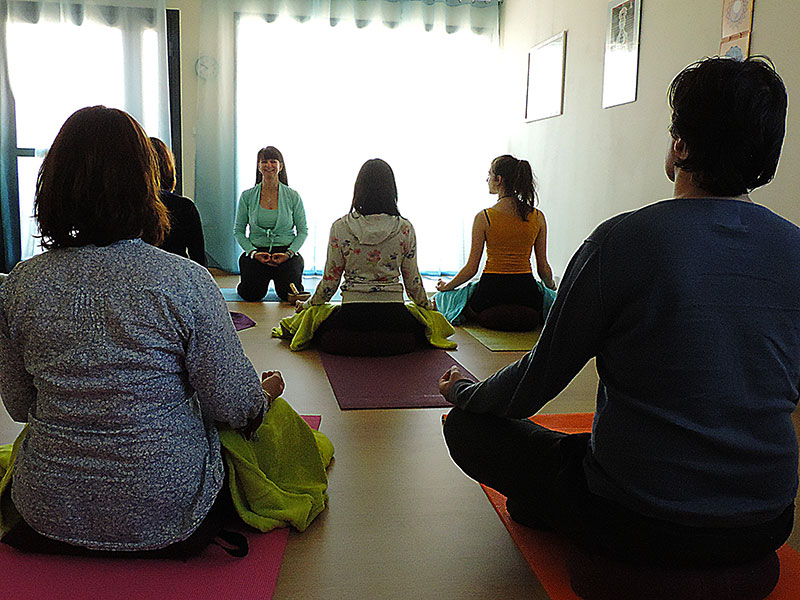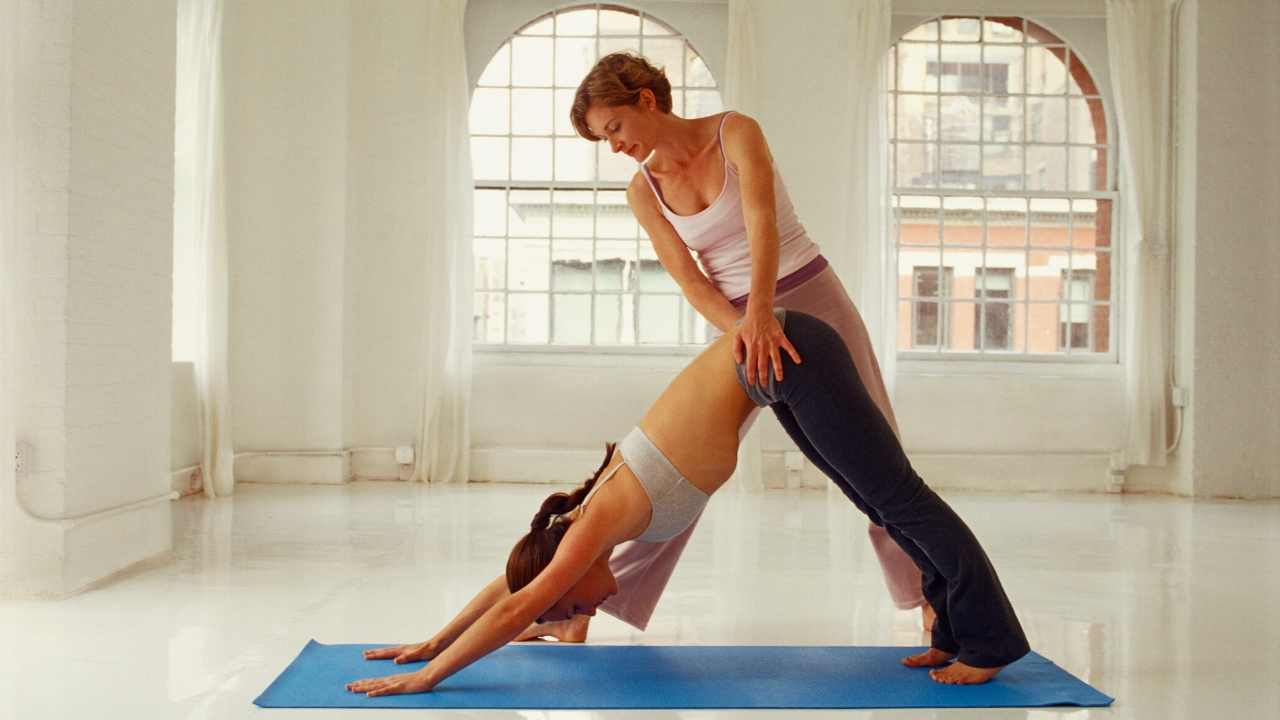
Dogs can benefit from yoga in many ways, including improved blood flow, reduced anxiety and stress, and increased flexibility. This is a fantastic way to bond and improve the mental and physical health of your dog.
Yoga can help some dogs become comfortable with new people, places and situations. It can also help them learn to trust and rely on their owners, even when they feel anxious or afraid.
There are many different ways you can do yoga with your pup, whether it's at home, a yoga class, or a studio for dogs. It's best to consult with your vet to determine what routine is safe for your dog and which poses are appropriate.
It's important that you are patient and gentle when starting yoga with your dog. Also, it's important to pay attention to their body language. Do not force your dog into poses he may not be comfortable in. If your dog is squirming or pulling away from you, it's time to stop.

Begin with the simplest positions your dog can handle and then work your way up. You'll find that as you get more comfortable on the mat with your dog, he will want to spend more time there and may even become a regular part of your practice.
Take a moment to connect with your dog's heart and breathe deeply together. You can do this by putting your hand on her heart or chest area and focusing on her breathing and her connection with you. Or you can share a pose with her, such as the heart-to-hound mudra, where you place one hand on your heart and one on hers while focusing on her breath.
Stretch and Relax your Body
Before starting yoga with your dog, make sure that you warm up your muscles by performing exercises such as light jogging or stretches. You can do this at the beginning of a session or afterward, to help prepare your body for the activity and to prevent injury from occurring.
Start by relaxing your breathing and focusing on your dog. You will be able to get both you and the dog in the right mind-set for the activities ahead.
After you finish the exercise, show your dog that it was an enjoyable session by paying them attention. You can use your hands to massage the paws or stomach to help them relax.

You can find online a wide range of video tutorials which show you the poses to do with your dog. This type of activity can be dangerous for some dogs, so it is best to consult your vet before including it in your daily routine.
Yoga with Your Dog
You can also do some simple yoga poses with your dog for them to get some exercise and relax, like the chair pose. You can do puppy paw mudra by asking your dog to lay on its back, with their front legs stretched out. Then cup their head gently between your hands and rest your forehead against them.
FAQ
Is yoga safe for everyone?
Yoga is safe for all abilities, ages, genders and ethnicities. Yoga has been widely practiced for thousands without side effects.
Please consult your doctor if any of these conditions are present before you begin a new exercise regimen.
Can I take classes with others?
This will depend on the class. Private lessons are offered by some teachers. Others offer group classes where you can meet other students in the class.
Some studios even offer small groups called "classes within a class," where you'll be paired with another person who shares similar interests and goals.
Is yoga safe?
Yes! Yoga is considered to have low risks and is generally safe for everyone. However, if you have any medical conditions and injuries, it is a good idea to consult your doctor before trying yoga.
Statistics
- According to calorie estimates calculated at Harvard Medical School, the average 125-pound person burns about 120 calories in a half hour of hatha yoga, and a 185-pound person burns about 178 calories in that half hour. (everydayhealth.com)
- According to the Agency for Healthcare Research and Quality, falls are incredibly common among older adults in nursing facilities. Even the simplest ones can increase the risk of death (24). (healthline.com)
- A 2020 review of 27 studies (1,805 total participants) of yoga interventions in children or adolescents found reductions in anxiety or depression in 70 percent of the studies, with more promising results for anxiety. (nccih.nih.gov)
- The American Psychological Association recently shared that 84% of American adults feel the impact of prolonged stress (5). (healthline.com)
- In comparison, a 125-pound person is estimated to burn 135 calories in 30 minutes of walking (at a pace of 15-minute miles) and 210 calories bicycling at a moderate pace on a stationary bike. (everydayhealth.com)
External Links
How To
Is yoga a good option for menopause symptoms?
Yoga is an ancient tradition that originated from India. It emphasizes stretching, breathing, and meditation. It has been used for thousands years to help people stay fit. It is becoming increasingly popular as people look for ways to stay fit and healthy in times of stress and illness.
Yoga is about using physical positions (asanas), to strengthen muscles, improve posture, and increase flexibility. This helps to reduce tension and build strength.
There are several types of yoga. Each type of yoga focuses on a specific aspect of the body such as breathing, stretching and relaxation.
All forms and types of yoga seek to attain balance within the body, mind and spirit. Yoga offers many benefits including better fitness, weight loss (weight loss), improved sleep quality and increased energy.
Yoga may be beneficial in the treatment of anxiety, depression, insomnia, and other conditions. However, evidence is lacking to show that yoga has any effect on other health issues like menopausal symptoms.
As well as helping you feel healthier and happier, yoga teaches you how to relax and manage stressful situations - skills that could be helpful when dealing with menopause.
Important to remember that yoga can cause muscle pain after exercise. Therefore, it is advisable to start with a low intensity level. If you have concerns about your current condition or are unsure whether you would benefit from yoga, speak to your doctor before starting.